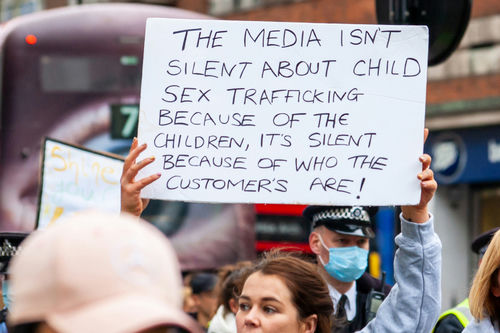Florida’s record-breaking child-predator sting exposed how open digital platforms and lax border-era policies intersect, while six arrestees now face ICE detainers that could trigger federal removal after state cases conclude.
Florida’s Record Operation and What Was Stopped
Florida’s Attorney General announced 48 arrests and 153 charges after a six-day undercover operation in Marion County targeting adults who believed they were meeting minors for illegal sex acts. Officials described the results as record-breaking for the annual initiative, underscoring how proactive stings can intercept offenders before a child is harmed. Undercover investigators posed as 13–15-year-olds on common messaging and dating platforms and coordinated meetups, where suspects arrived and were taken into custody by the multi-agency team.
Law enforcement leaders emphasized prevention and deterrence, highlighting coordination among local, state, and federal partners. Florida’s Office of Statewide Prosecution supported the effort, and the Marion County Sheriff’s Office led on-the-ground operations. Officials reported common charge categories such as traveling to meet a minor for unlawful sexual conduct, using a computer to solicit a child, unlawful use of a two-way communications device, transmitting harmful material to a minor, and related offenses. These charges reflect established Florida statutes routinely used in online exploitation cases.
ICE Detainers and Federal-State Coordination
Authorities confirmed that six foreign nationals arrested in the operation were flagged with ICE detainers, setting up potential transfer to federal custody after local proceedings or upon release. An ICE detainer is an administrative request to notify and briefly hold an individual for immigration pickup, not a judicial warrant; detainers often precede immigration charging and removal proceedings. This mechanism illustrates the cooperative pathway from local arrests to federal immigration enforcement when noncitizens are implicated in serious offenses.
State officials framed the detainers as part of a broader commitment to public safety and the rule of law. When local agencies coordinate with ICE, removability questions are handled in a separate federal track after criminal processing. That two-lane system—state prosecution followed by immigration adjudication—reinforces consequences for offenders and signals that Florida intends to use every lawful tool to protect children. Officials also cautioned parents to monitor online activity and discuss platform risks with teens.
Platforms, Parental Vigilance, and Litigation Pressure
Investigators reported offenders contacted decoys through popular apps such as Snapchat and dating platforms, mirroring trends seen in prior stings. Florida’s Attorney General has coupled enforcement messaging with litigation pressure on platforms, pointing to the mismatch between marketing to parents and actual safety outcomes. As these lawsuits proceed, companies could face stronger incentives for age verification, content moderation, and prompt cooperation with investigators, especially where repeat offender tactics exploit private messaging and disappearing media features.
Florida’s model—recurring, multi-day, multi-agency undercover operations—has produced growing arrest totals and broad public visibility. That consistency creates deterrence as would-be offenders see real-world consequences and steady prosecution. Families benefit when schools, churches, and civic groups amplify practical safety steps: supervising device use, securing privacy settings, and reporting suspicious contacts. Officials said coordination and public awareness together can narrow the digital hunting grounds predators try to exploit.
Where Policy Meets Enforcement in 2025
The second Trump administration has prioritized immigration enforcement, expanding expedited removal nationwide, reviving 287(g) task force agreements to empower trained local officers, and setting aggressive annual removal targets. Those federal shifts increase the practical impact of ICE detainers placed after state arrests like this operation. As detainers convert to custody transfers at case completion, immigration courts assess charges and status, aligning local child-protection wins with federal enforcement that can permanently remove convicted noncitizens from the country.
Florida’s leaders say the mission is straightforward: stop offenders before they reach a child, prosecute aggressively, and hand off eligible cases to ICE when the law allows. While some media reports showed early number discrepancies during breaking coverage, the official tally remains 48 arrests and 153 charges across six days—Florida’s highest for this recurring effort. The through-line is clear for conservative readers: a firm law-and-order posture, coordination across jurisdictions, and vigilance at home can shut down predation in both the digital and physical worlds.
Sources:
Child predator sting leads to 48 arrests and filing of 153 charges; ICE flags six foreign nationals
Florida ‘Operation Seek Yee Shall Find Out’: 40 arrested in child sex predator sting, officials say
Click this link for the original source of this article.
Author: Editorial Team
This content is courtesy of, and owned and copyrighted by, https://ourpatriot.com and its author. This content is made available by use of the public RSS feed offered by the host site and is used for educational purposes only. If you are the author or represent the host site and would like this content removed now and in the future, please contact USSANews.com using the email address in the Contact page found in the website menu.








